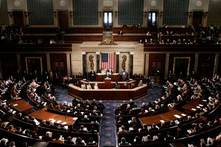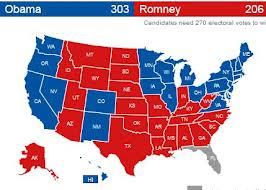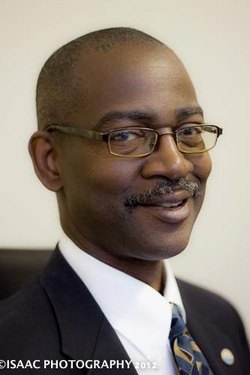Before I get too far into it. Here's some background information from the U.S. Electoral College's website: The Electoral College is a process, not a place. The founding fathers established it in the Constitution as a compromise between election of the President by a vote in Congress and election of the President by a popular vote of qualified citizens. From Wikipedia: Presidential electors are selected on a state-by-state basis, as determined by the laws of each state. Generally (with Maine and Nebraska being the exceptions), each state appoints its electors on a winner-take-all basis, based on the statewide popular vote on Election Day. Although ballots list the names of the presidential candidates, voters within the 50 states and Washington, D.C. actually choose electors for their state when they vote for President and Vice President. These presidential electors in turn cast electoral votes for those two offices. Even though the aggregate national popular vote is calculated by state officials and media organizations, the national popular vote is not the basis for electing a President or Vice President.  Click for larger image So what does any of this have to do with rigging the presidential election? Last month I wrote about a plan being discussed within the Republican party to change the way electoral votes are counted. Their plan involves blue states like Michigan, Wisconsin, Pennsylvania, Ohio and Virginia. The idea is to move from a "winner take all" method to alternate methods to allocate the electoral vote. If we consider what Pennsylvania Senate Majority Leader Dominic Pileggi is proposing Pennsylvania would change from a winner-take-all system to one that awards electoral votes proportionally. Of Pennsylvania’s 20 electoral votes, 18 would be distributed based on the percentage of the popular vote each candidate wins. The other two votes, representing the states senators, would be given to the candidate who wins the popular vote. Having earned 52 percent of Pennsylvanians’ votes, President Obama would have won 12 of the state’s 20 electoral votes instead of the full amount thereby losing 8 electoral votes. In Michigan the proposal is to divvy up 14 of the state's 16 electoral votes according to which candidate got the most votes in each congressional district. The other two would go to the statewide vote total winner. We should be very concerned. Politicians are trying to take control of the election process using state's rights as the vehicle. Do we really think that these changes would be on the table had Mitt Romney won? We should have learned our lesson by now on how far politicians will go to sieze power. It wasn't too long ago that we started fighting the voter suppression laws resulting from the 2008 election. Although we're being told that these plans are not high on the radar, do we want to believe it? Four presidents took office without winning the popular vote. They were elected, instead, by the electoral college or in the case of John Quincy Adams by the House of Representatives after a tie in the electoral votes. They were:
We can only imagine how different things would have been had Al Gore won instead of George W. Bush. We cannot allow these initiatives to change the electoral process. Do not let your state representatives subjugate your right to vote. It starts now, let's get this thing done....
|
EditorErnest R. Heyward is the Founder and President of the Marketplace for Social Awareness and Social Responsibility Inc. Categories
All
Archives
June 2020
|
MARKETPLACE FOR SOCIAL AWARENESS AND SOCIAL RESPONSIBILITY INC.




